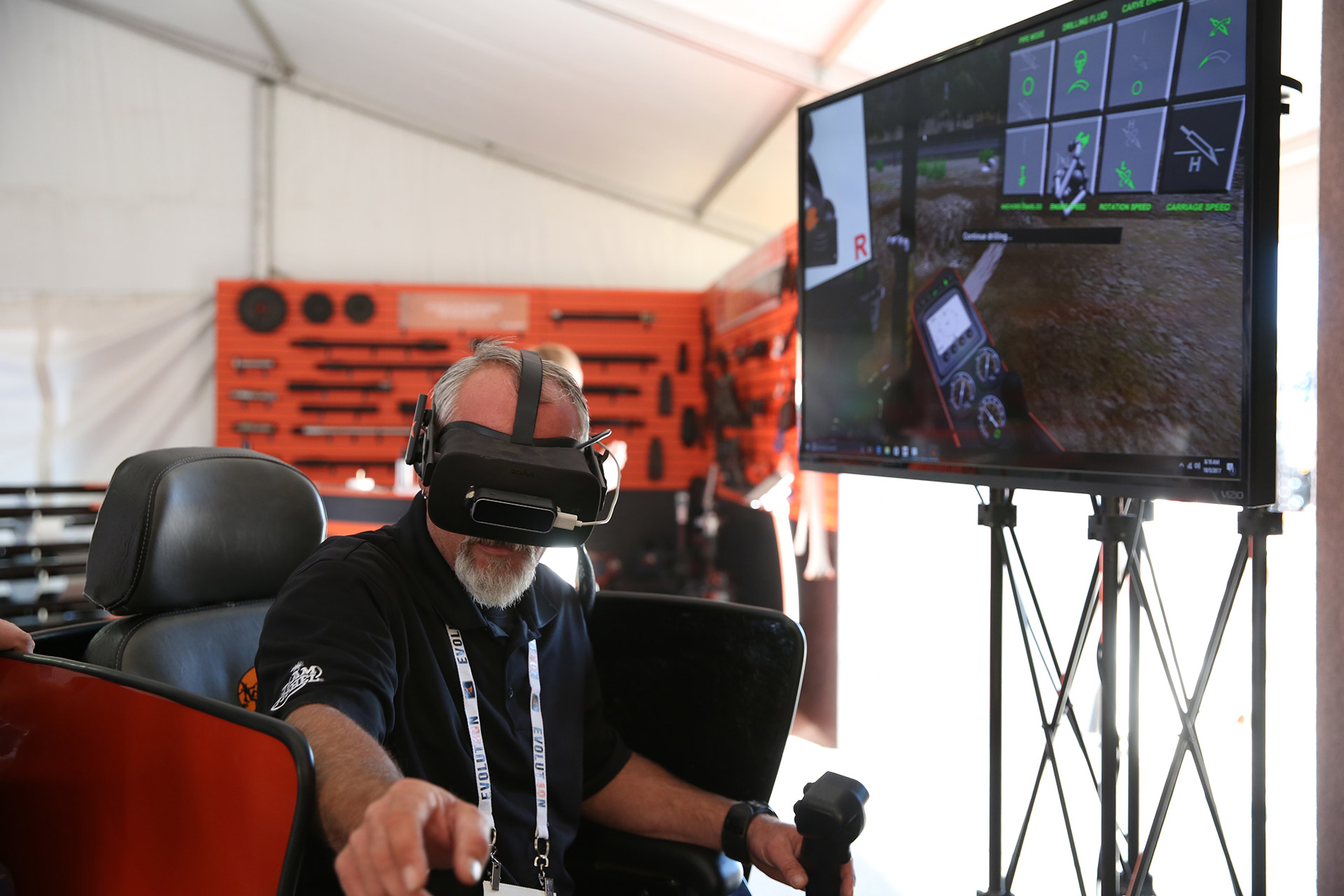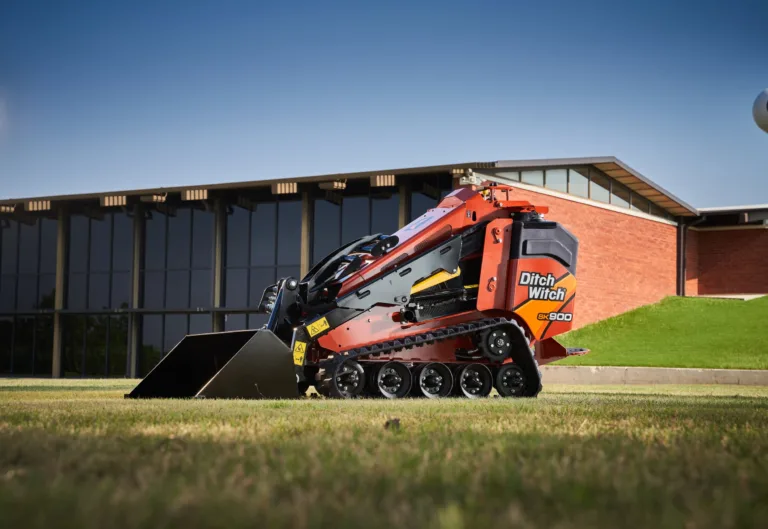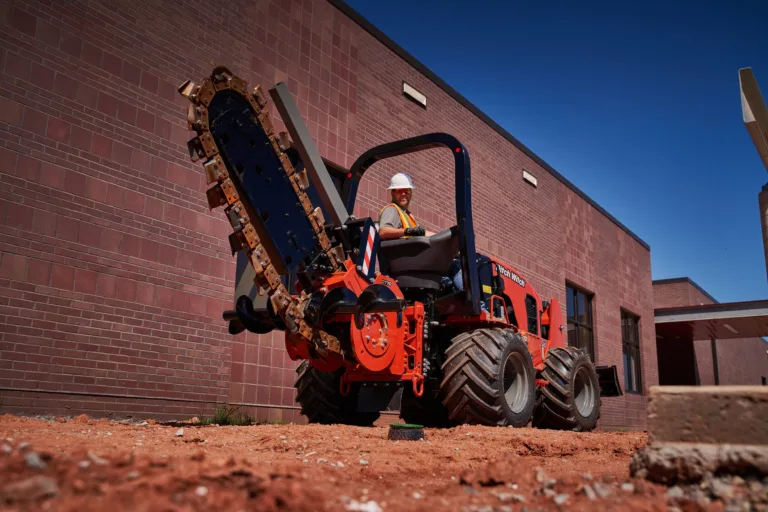by Nicholas Smith and Sean Hubbard
Soon, it may be possible if you want to check out a new piece of equipment for your business, you won’t need to travel to a dealership or tradeshow — you’ll just slip on a virtual reality (VR) headset. Transported to a virtual jobsite, you’ll be able to see and walk around the equipment, tap buttons for design specs and equipment feature details and even learn how to operate it. This is just one of many ways that VR could change the construction industry in the coming years. Large corporations like Facebook and venture capital firms alike are betting big on the technology, having invested billions of dollars in virtual and augmented reality (AR) technology in recent years. Analysts say the technology could deliver $1.5 trillion of economic benefits by 2030. In the construction world, VR is already helping re-imagine how operators train on the equipment they use, but that’s only a glimpse of how technology can improve how the industry operates.
Today’s Top Opportunity
The biggest, most immediate impact that VR can have on your business today is with virtual operator training. In the underground construction space, headset-based VR and screen-based 2D training simulators have been developed to help operators engage with equipment and learn about its proper usage. The simulators give operators access to digital equipment replicas with controls and functionality that mirror the actual equipment, creating realistic training experiences. Because the training doesn’t depend on the availability of live equipment and jobsites, it can be done at any time.
Virtual training isn’t just limited to equipment. VR training solutions have also been developed for technology like horizontal directional drills or HDD guidance systems. This is an example of where virtual training shines because it can enhance the experience. Specifically, in a virtual training environment, the ground can be made transparent, and the guidance system’s signals can be visualized. This can help a trainee directly see — in a way that can’t be recreated in live training — how their actions and different ground conditions can affect the guidance system’s signals.
Another impressive feature of virtual training is that the separate virtual training experiences of an equipment operator and an HDD guidance system user can be combined so they can train together. This can help both trainees learn how the other works and give them experience working together and speaking the same language before they’re working on a live jobsite. Virtual training can also help the construction industry address its workforce challenges. For starters, incorporating VR technology into construction jobs can help attract a younger generation of workers who have embraced the technology. And because virtual training is done in a controlled and low-risk environment, trainees can focus on learning proper equipment operation and valuable safety procedures without worrying about making mistakes that would have consequences in the real world.
A Metaverse of Possibilities
In addition to bringing training and support into the virtual world, innovative equipment providers are exploring new and better ways to connect with customers in the VR space known as the metaverse. If you’ve been to a show like CONEXPO-CON/AGG recently, you may have seen how OEMs are using the metaverse to extend their trade show booths into virtual showrooms. In these showrooms, you can do a virtual walk-around of new or updated equipment or even receive training on them. Looking to the future, it won’t only be at trade shows where you will someday see and experience equipment in a virtual environment. You’ll be able to do it right from your home or office.
This has tremendous potential to simplify the exploration and buying process. If you’re like most contractors, you prefer to see and walk around a piece of equipment and ask a sales rep questions before you buy it, but it’s not always convenient to do this. It can require traveling to the nearest dealership that has the equipment or possibly waiting to travel to a trade show if the equipment is new and not yet widely available.
Soon, you may be able to bypass this process and immediately access the equipment in the metaverse. No matter where you are, you’ll be able to choose a piece of equipment, see and walk around it and operate it, all in a virtual environment. Your local sales rep or even an OEM product expert can join you in that environment — again, regardless of where they are — to provide an overview of the equipment and answer your questions. If you like everything you see and hear, you could even begin the purchasing process right then and there.
The Future Is Up To You
VR technology and the metaverse are still only in their infancy. Equipment makers have a wealth of ideas, but ultimately, future applications will be driven by what equipment users like you want. The possibilities are endless. VR could potentially provide benefits like helping ease troubleshooting and reducing equipment downtime. For example, if you have a problem with a piece of equipment or even just a question about its operation or maintenance, you could join a dealer or OEM technician in a virtual environment along with the virtual replica of the machine. There, you could troubleshoot the issue and use the virtual equipment as a valuable reference point or see what normal operation of the equipment looks like
So, what would you like to see? More virtual training options? Live support in a VR or AR experience? Virtual product unveilings? Opportunities to virtually connect with the next generation of potential workers who are already active in the metaverse? Speak up, and your idea may become reality — or virtual reality.
Nicholas Smith is a product training specialist and Sean Hubbard is a marketing communications manager with Ditch Witch. Article originally appeared on CompactEquip.com






